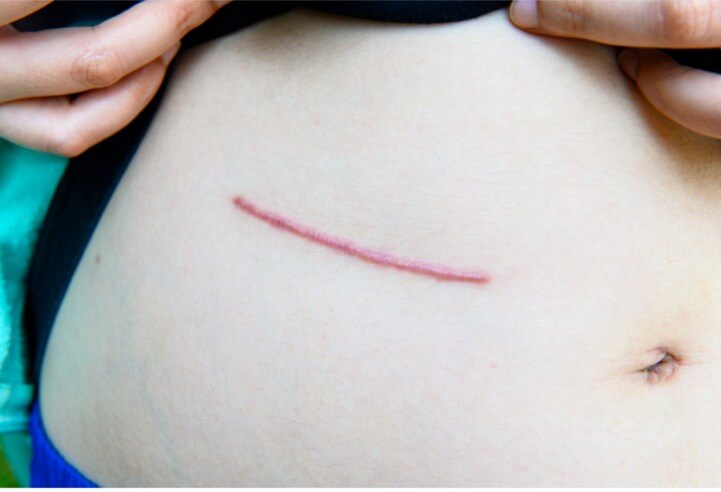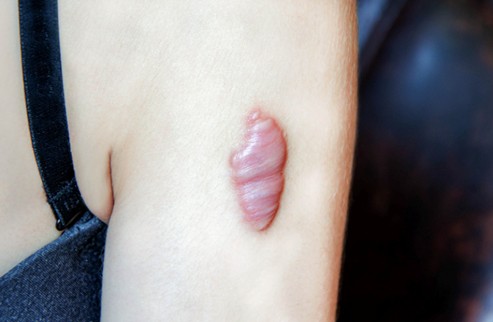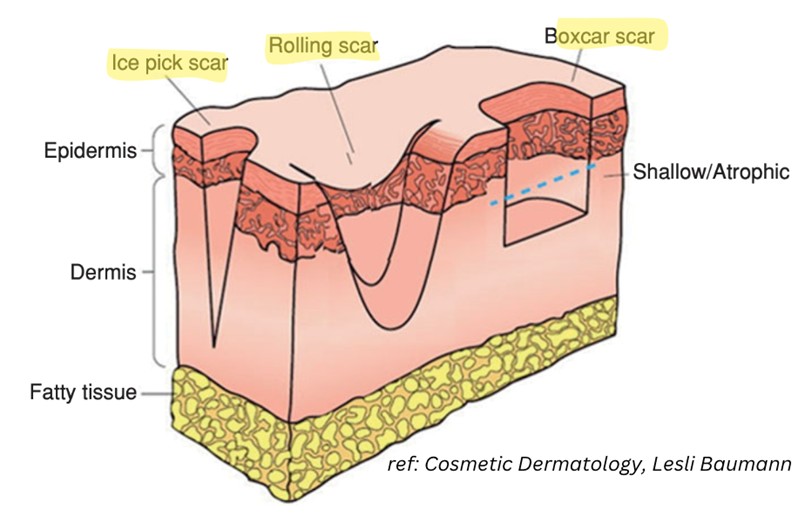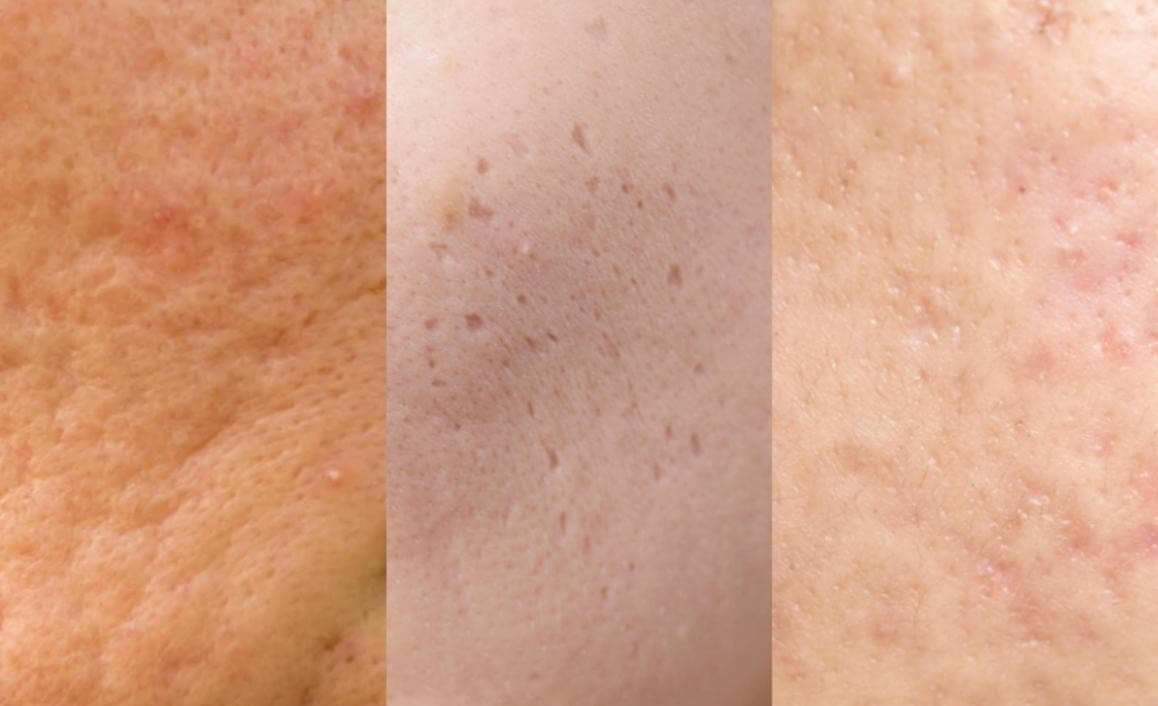- Emporis Kota Damansara , Puchong & Cheras
- 010-8286700
- hello@luna.clinic
Ever wondered why some scars appear as tiny craters, while others stand out like unwelcome mountain ranges?
When your skin experiences trauma, it doesn’t always heal the same way. An overproduction of collagen during healing can cause raised scars, such as hypertrophic scars or keloid scars. On the other hand, when the skin cannot regenerate tissue, it results in atrophic scars, which appear as depressions in the skin.
Let’s explore the fascinating world of scars and discover how they form and the treatments available for effective scar healing.
Raised scars occur when the skin produces too much collagen during healing. These scars are categorized into two types:



Atrophic scars are depressions in the skin caused by the loss of tissue during healing. These scars come in three main forms:

It’s rare for individuals to have only one type of acne scar. Most patients exhibit a mix of boxcar scars, ice pick scars, and rolling scars.
Treating scars can be complex, as different types require tailored approaches. Consultation with a professional is essential to determine the best scar treatment for your specific needs.
Don’t let scars affect your confidence. Book your consultation today to determine the most effective scar healing approach tailored to your unique skin type. Whether you’re dealing with atrophic scars, keloid scars, or hypertrophic scars, our professional team is here to help you achieve smoother, healthier skin.
Operating Hours:
Mon-Fri : 10am – 7pm
Sat-Sun : 10am – 6pm
Follow Us:
Hi, How can we assist you?